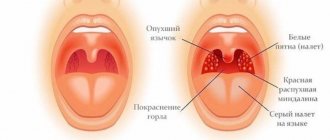Chamomile as an additional aid in the treatment of oral diseases
There are probably very few people who have never tried rinsing their mouth with chamomile. It is not surprising, because this medicinal culture has healing properties. It is suitable not only for gargling and gargling, but can be drunk to normalize the functioning of the gastrointestinal tract. In addition, decoctions and products based on it are not addictive and are safe to swallow even by small children.
The decoction is used in the treatment of various problems
From the medicinal culture, you can make decoctions-rinses for daily treatment of the oral cavity after brushing your teeth. This will be an excellent preventive measure against dental diseases. If you have problems with teeth and gums, then the use of chamomile flowers will also be useful. However, it is important to understand that recipes based on this plant, like any other folk remedies, should only be additional or auxiliary to the main treatment prescribed by the doctor.
Buy chamomile only at the pharmacy and give up the idea of collecting flowers in the garden, flower beds or meadows. The fact is that other types of plants are often confused with medicinal flowers - nivjak, navel, chamomile. Externally, their flowers are very similar, but there is absolutely no benefit from using them.
Let's look at what problems chamomile will help you cope with more quickly if you use it in the complex treatment of certain oral diseases.
Bad breath, or halitosis
The smell is caused by bacteria, and chamomile has a powerful antiseptic effect due to the substance camazulene it contains. It fights various pathogens, in addition, it not only suppresses the growth of pathogenic microorganisms, but also restores the natural balance of microflora - eliminates dysbiosis.
Recipes for halitosis
- with mint: to prepare a decoction, you need to mix 1 tablespoon of mint and chamomile and add 500 ml of boiled water to the mixture. Pour boiling water over the ingredients and strain after an hour.
- with strawberry leaves: mix the ingredients in equal quantities (for example, one tablespoon of both), add boiling water. The decoction should be placed in a dark, warm place, left for about half an hour, strained and cooled.
The decoction helps get rid of bad breath.
How to rinse your mouth with chamomile: use any of the prepared decoctions in the morning and evening as a rinse after brushing your teeth. Just take a little liquid into your mouth, carefully move it from side to side for 1-3 minutes, and spit it out. Do not eat or drink for the next half hour to ensure maximum benefit from the product.
Do not boil chamomile flowers over an open fire. It’s better to simply pour boiling water over them (or simmer in a water bath for about 20–30 minutes) and let them brew, so they will retain maximum beneficial properties.
Medicinal solutions for rinsing teeth and gums
You will achieve greater results if you start using an irrigator to rinse your gums - a device that delivers liquid into the oral cavity under pressure. For this purpose, it is best not to use self-prepared rinses based on medicinal herbs, which can clog the filter, but to use ready-to-use pharmaceutical medicines for rinsing the gums.
Chlorhexidine
The use of chlorhexidine for rinsing gums is common in dentistry. It effectively copes with the symptoms of inflammation and has an affordable price. Patients are often interested in the question: how to dilute chlorhexidine? In this case we are talking about an aqueous 0.05% solution, so dilution with water is not required. It is recommended to use after each meal and for at least one minute.
Rotokan
For rinsing, rotokan is used in the form of an alcohol tincture based on plant extracts at least 3 times a day. You will need 1 teaspoon of the product per 200 milliliters of boiled warm water. Do not swallow!
Furacilin
Furacilin for rinsing gums is most often used in tablets: crush 1 tablet, pour a glass of hot water until completely dissolved, cool to body temperature and rinse your mouth after eating.
Stomatophyte
An alcohol tincture containing extracts of 7 medicinal plants. Requires dilution with water at the rate of 1 measuring cup per 50 milliliters of warm boiled water. Rinsing with Stomatofit is prescribed 3 times a day. Not suitable for children under 12 years of age!
Miramistin
Rinsing the gums with Miramistin is carried out at the rate of 10 milliliters of solution per 25 milliliters of boiled water. You should not eat for an hour after the procedure. Use as a mouth rinse for no longer than 5 days in a row, otherwise Miramistin begins to inhibit the beneficial microflora in the mouth.
Chlorophyllipt
Chlorophyllipt for rinsing is used in the form of an alcohol solution based on a strong natural antiseptic - eucalyptus extract. It is recommended to use it no earlier than half an hour after meals, preparing a mouthwash at the rate of 1 tablespoon per glass of warm water.
Toothache
The medicinal culture contains organic valeric acid and analgesic compounds, so it does a good job of reducing the sensitivity of nerve endings and can cope with pain of mild to moderate intensity. It is thanks to its anesthetic properties that many people like to rinse their mouths and throats with chamomile when the first signs of acute respiratory infections or acute respiratory viral infections, as well as toothache, appear.
Due to its positive properties and lack of harm, folk recipes with chamomile are popular among nursing and pregnant women in a situation where many analgesics are simply contraindicated due to the potential danger.
The likelihood of an allergic reaction to pharmaceutical chamomile is practically excluded. However, not everyone knows that it is not recommended to take it orally or drink it as tea for women in early pregnancy, as it produces estrogen hormones, which leads to uterine tone and can cause miscarriage. Also, teas and decoctions should not be consumed internally by people with anacid gastritis (with zero stomach acidity).
Strong decoction against toothache
You will need 300 ml of boiled water per 5 spoons of medicinal flowers. Before use, it is recommended to leave the resulting composition for about 30 minutes and cool to room temperature.
How to use: you need to take a little liquid into your mouth and hold it for as long as possible. You should not rinse your mouth with a cold or hot decoction, as you may get the opposite effect of what was expected, namely, cause a new attack of pain.
The product can cope with toothache
To enhance the effect, you can add a few tablespoons of dried sage or echinacea to the mixture. A compress of chamomile oil will also help relieve toothache. Just apply a few drops of prepared oil (sold in pharmacies) to cotton wool and apply to the sore tooth. Before doing this, make sure that you are not allergic to other components of the composition.
“My grandmother told me how to brew chamomile to gargle and gargle. These days it’s even easier to do this because it’s sold in filter bags, and all you have to do is pour boiling water over it. I use it myself on occasion and give it to my children for almost all their troubles. I believe that this is a natural and completely harmless product, the benefits of which have been proven by more than one generation. And it costs less than fancy medicines that cure one thing and cripple another.”
Maria Fadeeva, review from 32top.ru
Folk recipes for effective rinses for gums
The anti-inflammatory properties of chamomile are actively used by dentistry to help with diseases of the oral mucosa. To speed up the healing process, traditional healers recommend increasing the effectiveness of the medicinal plant by adding healing ingredients such as honey or other medicinal herbs with similar properties.
Chamomile tea for calm
Problems with gums in most cases disrupt the balance of the nervous system. To find peace of mind, we recommend preparing a soothing tea from modest flowers according to the following recipe:
- Rinse the brewing container with boiling water;
- add 5 tablespoons of dry raw materials;
- pour boiling water over it and leave to steep.
The medicinal drink is consumed without sugar; if necessary, you can add a little honey and drink it warm, but not hot, several times a day. In addition to its calming effect on the nervous system, this tea effectively reduces the increased sensitivity of gum tissue and increases the body's resistance to various types of infection.
How to prepare a decoction of chamomile with calendula
To alleviate the condition of inflammatory gum diseases (gingivitis, periodontal disease), irrigating the mouth with chamomile decoction will help. You can speed up the effect of the solution by adding calendula and yarrow to the medicinal composition. Cooking method:
- take a tablespoon of each type of medicinal herb;
- Place the mixture in a brewing container and pour boiling water over it;
- Place in a water bath for 10-15 minutes, strain, and cool.
To relieve symptoms of the inflammatory process and relieve pain, rinse your mouth with the broth at least 4 times a day. After the procedure, you cannot eat or drink anything for 30 minutes. You can prepare two separate decoctions - from chamomile and calendula. Then, rinsing the mouth with chamomile for gum inflammation is alternated with irrigating with a decoction of calendula.
We prepare an infusion from chamomile for gum pain
To prepare a gargle that soothes pain not only in the gums, but also in the throat, steam a handful of inflorescences with a glass of boiling water. This recipe does not require boiling the solution in a water bath, but the medicine must be infused for several hours.
The readiness of the rinse is determined by its color - it should turn light yellow. The procedure is performed after cleaning the dentition.
If you took a large portion of the herb, the rinse will turn dark brown. The use of a concentrated solution may cause an allergic reaction and irritation of the oral mucosa.
Chamomile honey in dentistry
Thanks to the honey recipe, it is possible to relieve the symptoms of stomatitis and periodontal disease, and manifestations of gumboil disease. Rinse the mouth with a warm solution every half hour, preparing a medicinal composition according to the following recipe:
- pour a full tablespoon of chamomile inflorescences into a glass of hot (boiled) water;
- the prepared rinse is infused for 20 minutes;
- filter, squeeze out the cake, diluting with boiled water to the original volume.
Honey (1-2 tablespoons) is added only to the cooled composition so that the beekeeping product does not lose its medicinal properties in hot water. When treating dental diseases, you can use not only dry herbs, but also ready-made preparations.
To prepare a rinse for gums, dissolve 15 drops of Romazulan in a glass of boiled water, containing an alcoholic extract of chamomile flowers with the addition of oil from the same plant.
Chamomile treats toothache
A medicinal plant with a rich chemical composition is used to soothe toothache and block the inflammatory process in the gums. To enhance the effect of the phytosolution, sage leaves are added to it, which are also famous for their anti-inflammatory and disinfectant properties against the backdrop of an astringent effect.
How to prepare a rinse with a strong antiseptic effect:
- take 1 tablespoon of chopped sage leaves;
- add 2 tablespoons of dried chamomile flowers;
- Pour a glass of boiling water over the vegetable mixture and leave for 15 minutes.
Rinse your mouth with warm infusion, holding it for a few seconds on the side of the diseased tooth or gum lesion. The infusion should not be boiled so that the essential oils do not lose most of their beneficial properties.
Difficult teething
Chamomile tea and compresses are recommended to be given to young children to alleviate the condition of difficult teething. These products are natural, hypoallergenic, relieve itching, skin irritation and pain and are as safe as possible for the body. Chamomile is an essential component of many gels to relieve teething symptoms: Chicco, Kamistad Baby, Baby Doctor, Dentinox, Parsonal1.
Adults whose wisdom teeth have begun to emerge can also make a decoction or compress. In this case, you will get a “2 in 1” effect - numb the gums and disinfect tissues damaged as a result of teething.
Chamomile will relieve itching and irritation during teething
Gum inflammation
Chamomile is rich in natural antioxidants that have antifungal and antiviral properties. It contains ascorbic (vitamin C) and nicotinic (vitamin PP) acids, as well as oils that have an anti-inflammatory and immunostimulating effect. If you rinse your mouth with chamomile, you can relieve itching and swelling of the gums, reduce their bleeding and reduce sensitivity. It will help strengthen and tone the mucous membrane, strengthen local immunity and increase tissue resistance to adverse factors.
The decoction is used to treat gum inflammation
Decoctions, lotions and applications from these medicinal raw materials are used2 in the complex treatment of diseases such as chronic catarrhal gingivitis, periodontitis and periodontal disease. To enhance the effect, chamomile is usually mixed with calamus or calendula, as well as other medicinal plants (sage, oak bark, eucalyptus).
How to rinse your mouth with chamomile for gum inflammation? It is recommended to use only fresh (one day old) and warm decoction. The procedure should be carried out after each meal, as well as after morning and evening brushing of teeth. The course of treatment is 3 weeks.
What are the benefits of chamomile?
The queen of medicinal plants belongs to the Asteraceae, or Asteraceae, family. The genus “chamomile” includes at least 20 species of low herbs that have a strong but pleasant aroma and bloom in the first year of life.
The action of chamomile has a beneficial effect on the health of the entire body, and the medicinal effect is explained by the high content of essential oil in the inflorescences. To obtain maximum benefits, it is important to properly prepare and store plant materials.
Damage to the mucosa
If you have wounds in your mouth caused by rubbing from braces or dentures, then chamomile, which can be used as a mouth rinse, will help ease the condition and quickly restore damaged tissue. Medicinal decoctions will also be effective in treating rashes caused by fungal stomatitis and candidiasis, but, of course, only in combination with other measures.
Medicinal flowers accelerate the regeneration of cells and tissues, help in the fight against cracks in the tongue and other damage to the mucous membrane. If you rinse, you also reduce the risk of infection.
If the mucous membrane is damaged, rinsing with a decoction also helps.
Chamomile oral baths are recommended for those who have undergone surgery on the oral tissues or have had teeth removed. This measure helps to heal faster the areas where surgery was performed. After tooth extraction, this also becomes a prevention of alveolitis. How to do it: just take the decoction into your mouth, hold it for 2-3 minutes (avoid vigorous rinsing), and carefully spit it out. After surgical interventions, oral baths can only be started on the 2nd day.
ENT diseases
Due to its anti-inflammatory, analgesic and antiseptic properties, the medicinal decoction is used to rinse the mouth and throat for tonsillitis, laryngitis, lymphadenitis and sialadenitis (salithiasis).
If you use decoctions of this medicinal culture to treat diseases of the mouth and throat, then never use them hot. It is better that the liquid is warm or at room temperature, because otherwise you can burn the mucous membranes. You should not swallow the decoction, otherwise you can push bacteria into the body and cause complications.
Notice
: Undefined variable: post_id in
/home/c/ch75405/public_html/wp-content/themes/UltraSmile/single-item.php
on line
45 Notice
: Undefined variable: full in
/home/c/ch75405/public_html/wp-content /themes/UltraSmile/single-item.php
on line
46
Rate this article:
( 6 ratings, average: 5.00 out of 5)
prevention
- Goreva E.A., Petrenko A.V., Babailov M.S. The use of herbal preparations for teething syndrome in children // Medical and pharmaceutical journal “Pulse”. – 2022.
- Goncharova E.I. Herbal remedies in the prevention and treatment of periodontal diseases // Russian Dental Journal. – 2012.
Expert “Chamomile is an excellent natural antiseptic. For a while, it can help alleviate the condition of various dental diseases, as it relieves unpleasant symptoms well. However, it will not eliminate the root cause of the problem. Therefore, seeing a doctor is a must!” Dentist-therapist Elena Vladimirovna Orlova
Consulting specialist
Orlova Elena Vladimirovna
Doctor rating: 9.5 out of 10 (2) Specialization: Dentist-therapist Experience: 33 years
Comments
Doesn't chamomile whiten teeth by any chance?
Polina (05.14.2020 at 20:40) Reply to comment
- Dear Polina, chamomile does not whiten the enamel, and if you abuse a highly concentrated chamomile decoction or constantly drink strong tea from this medicinal plant, then, on the contrary, you risk staining the enamel with a yellowish tint.
Editorial staff of the portal UltraSmile.ru (05/20/2020 at 09:18) Reply to comment
Can I rinse with chamomile after tooth extraction or not? I had my wisdom tooth removed, and the doctor told me not to rinse with anything. And my mother says you need to rinse it, so the wound from removal will heal faster.
Love (05/20/2020 at 08:38) Reply to comment
I know that chamomile is good for inflammation and gastritis, but I didn’t know that it should be used to rinse the mouth for dental problems. Tell me, if you have bleeding gums, how many times a day should you rinse your mouth to achieve results?
Olga (05/20/2020 at 08:48) Reply to comment
Chamomile is a wonderful natural antiseptic. But, with its frequent use, namely with daily rinsing of the mouth with a decoction, can the enamel begin to acquire a yellow tint?
Nadezhda Ivanova (05/20/2020 at 09:16) Reply to comment
Hello? Tell me, can something more readily available help with bad breath? I don't have mint or strawberry leaves in my house. Maybe something more readily available can be used? Chamomile or something else.. Thanks in advance for your feedback!
Anna (05/20/2020 at 09:22) Reply to comment
Is it possible to rinse your mouth with chamomile decoction for an abscess in the right cheek area after drainage and removal of the fifteenth tooth? The attending physician did not prescribe rinsing, only bandages and antibiotics.
Sofia (05/20/2020 at 09:28) Reply to comment
The child is 6 months old. Teeth are cutting through. Naturally, rinsing is impossible, since the solution is constantly swallowed. Is it possible to drink chamomile at such an early age? Could there be any side effects?
Julia (05/20/2020 at 09:34) Reply to comment
As I understand it, chamomile acts as an additional adjuvant and should be used in complex treatment? Or are there cases in which just using chamomile is enough?
Tatyana (05/20/2020 at 09:43) Reply to comment
I always thought that chamomile prepared by hand is the best, but it turns out it’s not so simple - you need to have a good understanding of plants before you start collecting them. Which pharmacy chamomile is better to take - in bags or in bulk?
Alla (06/22/2020 at 07:23) Reply to comment
I rinsed my mouth with chamomile decoction for a week. After each use, an unpleasant sensation in the mouth, as if the top layer of the teeth and gums had been wiped off with soda. Is this how it should be or is this procedure not suitable for me?
Darina (06.22.2020 at 14:42) Reply to comment
I noticed that lately my gums have been inflamed and bleeding. Please tell me what if I start rinsing my teeth with chamomile. Will chamomile infusion help get rid of inflammation?
Julia (06/22/2020 at 15:43) Reply to comment
Tell me, please, I heard that for gastritis and high acidity it is not recommended to “use” chamomile. Is this true or are there no restrictions? Thank you!
Christina (06.22.2020 at 18:48) Reply to comment
Write your comment Cancel reply
Collection and storage rules
You can collect grass at any time of the year, but the inflorescences are considered the most useful. If they are harvested at the beginning of summer (mid-June), the herbal mixture will delight you with a high concentration of essential oils and medicinal substances.
A characteristic feature of chamomile is a yellow pad in the center, framed by a corolla of white petals.
How to prepare a medicinal plant yourself:
- Only the heads of inflorescences are collected;
- for drying, lay out in one layer;
- dried without heating the herbal mass, but in a draft.
An important condition for proper drying is that the plant must retain its aroma and slight bitter taste, and not change color and structure.











